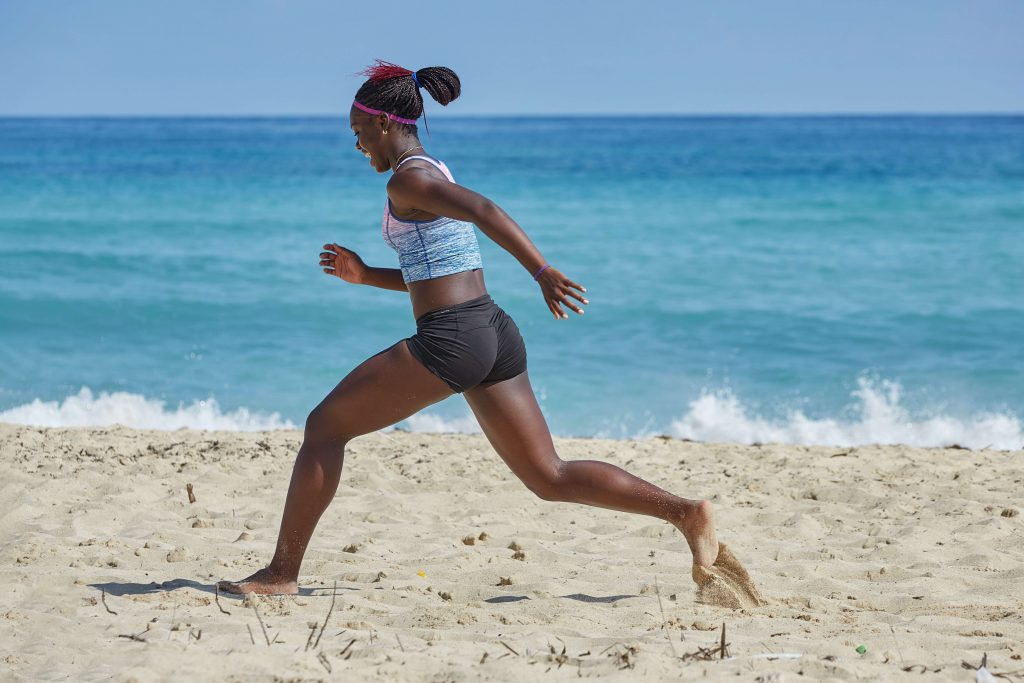Summer’s here and it appears that the main question on everyone’s lips is to D or not to D, Vitamin D that is.
There is so much conflicting advice on wellness websites and medical authorities about vitamin D, sun exposure and supplementation, and, only this week in the news, did the Scientific Advisory on Nutrition (SACN) in the UK decide that everyone should take a vitamin D supplement in the Winter.
Many of you ask me about vitamin D for various cycle related and fertility issues, so here is the overview of what you need to know.
Vitamin D
Vitamin D is needed by the body to help the body absorb minerals that we need for good health such as calcium, iron, magnesium, phosphate and zinc. A fascinating aspect of vitamin D is because it acts in a different place to where it is made in the body, it can be considered a hormone rather than a vitamin.
Most of us have a vague recollection of vitamin D deficiency being connected to bone health issues such as rickets. However, vitamin D can affect us in so many other ways.
In my studies we were taught adequate levels of vitamin D can help:
- improve bone health
- reduce risk of eye disorders such as macular degeneration
- regulating the immune system and immune cells
- improve levels of oestrogen in women (think improved libido, great skin and more body confidence and generally feeling more of a goddess)
- improved levels of serotonin, dopamine and GABA (neurotransmitters often implicated in depression)
- improved thyroid function
- improved ovarian health
- better regulation of insulin sensitivity and secretion leading to balanced blood sugar levels
- improved sperm health and motility (in men), but no improvement on numbers or size
- decreased risk of vaginal infections
- better chances of embryo implantation
- reduced risk of pre-eclampsia, premature labour in pregnant women
- in newborns: reduced risk of type 1 diabetes, eczema, asthma and autism
As you can see, vitamin D is so much more than just bone health, it is vitally important to our hormonal and reproductive health too. It is around such an amazing compound.

Signs of Vitamin D Deficiency
Common signs of deficiency are fatigue and exhaustion, joint pain or stiffness, tooth decay, muscle cramps, back ache and hair loss. As with all other signs and symptoms, it is easy to self diagnose with the help of doctor google when you spot one or two symptoms, so I recommend seeing a practitioner who can do a micronutrient assessment or, even better, getting your 25(OH)D levels tested.
A quick note on testing, it is useful getting a print out or writing down your test results as doctors work within a range of well or sick and actually, we want to find out what your optimal range is (what range has you feeling good and in great health).
Also different labs have different units of measurement so you could be aiming to too much vitamin D without realising it. The range I look at with my clients is around 50-70 ng/mL along with the signs and symptoms.
But that isn’t all, it is possible to have signs of vitamin d deficiency even if you have the right blood serum levels due to hypothyroid (low thyroid function) or even a genetic variant that prevents the body from using it properly (there are test for this).
So as you can see, you need to look at the whole picture, ideally with someone qualified or trained to help you with this.
I remember my first experience of low vitamin D, I was falling asleep throughout the day and my brain was so foggy. When I got tested, my blood levels were 11 ng/mL which certainly explained a lot!

Signs of Excess Vitamin D
Unfortunately with vitamin D, it is possible to take too much, especially if using supplements. So I always recommend when supplementing, it is always wise to do so under supervision. It is very hard to get to excess levels when just eating vitamin D rich foods or through sun exposure, but more likely through supplementation.
Some of the signs of too much vitamin D often include: nausea, vomiting, confusion, itchiness, increased thirst and urination, constipation, weakness, weightless, poor appetite, arrhythmias of the heart and possible damage to the kidneys.
Great So What’s The Best Source of Vitamin D: Sunshine, foods or Supplementation?
Actually, there are a few other things that can cause an issue with your vitamin D levels that you need to look at first, otherwise, your levels may not improve.
Gut Health – this is so important. Vitamin D is absorbed through the small intestine, so if you know you have issues such as leaky gut or other gut issues, you will need to fix these first so that you can absorb your vitamin D.
High Cortisol Levels – Cortisol is made from cholesterol and so is vitamin D, so if you are under a lot of stress (or using steroid medications), you will not have enough to make vitamin D, so it is important to reduce or offset your stress as much as you can.
Inflammation – any kind of inflammation can reduce your body’s ability to use vitamin D. In my experience, a lot of inflammation can be associated with gut issues and food intolerances so fixing your gut will help. Inflammation is also often raised by stress so it is key to get your stress levels under control too.
Low fat intake – we need fat to absorb vitamin D so if you are on a low fat diet, you may not be absorbing vitamin D properly.
High body fat – if you have a lot of excess body weight the fat cells will uptake a lot of vitamin D leaving less to do it’s job in the body.
OK, so assuming, you have or are working on getting the above issues under control what can you do to raise your vitamin D levels?

Making Vitamin D from Sunshine
Most of us know we don’t get enough sunshine, and we specifically need UVB for to produce vitamin D which is unfortunately what makes us burn. The recommendations in the UK are for people to get up to 15 minutes of sunshine 3 times a week. However, if you have sensitive skin, you will need to start off in smaller blocks of time and work your way up to 15 minutes.
Also, you need to be not wearing any sunblock that blocks UVB and, for optimal eye health, not be wearing glasses or contact lenses. Some people will need to use a weak sunblock on sensitive areas such as the face, neck and décolletage in which case, ensure your arms and legs are exposed.
If you are closer to the equator, you may need less time in the sun. Equally, if you live further away from the equator, you may need more time in the sun for the same effect.
Also, the darker your skin, the longer you will need in the sun.
In Winter, you may need more time again.
However, you still need to be aware of sunburn, feeling uncomfortable, close to sunburn or heatstroke and if you are told you must stay out of the sun due to skin cancer risk, then this isn’t the option for you.

Vitamin D Rich Foods
Most good sources of vitamin D are oily fish such as salmon, herring, mackerel and sardines. Oysters, egg yolks and cottage cheese can be good sources too.
There are also foods containing pre-cursors to vitamin D such as mushrooms and green leafy vegetables.
Vitamin D Supplements
There are a couple of supplements people can take. First of all there is cod liver oil which is a good source of both vitamin D and vitamin A. This is a great source for many people but as we never recommend vitamin A supplementation or vitamin A rich foods for pregnant women (in the UK), this isn’t ideal if you are or think you may be pregnant.
Another form of vitamin D to take is vitamin D3 (a lot of supplements are D2 so read the labels), however, it is possible to get an excess of this so I look for a combination of vitamin D3 and K2. To determine the best dose, it is best to consult a professional and get your levels tested and re-tested.
So there you have it, Vitamin D in a nutshell. If you have a vitamin D story you’d like to share, feel free to do so in the Facebook Group.
Want more help balancing your hormones, sign up for the free Seed Cycling Challenge to be sent to your inbox here.




